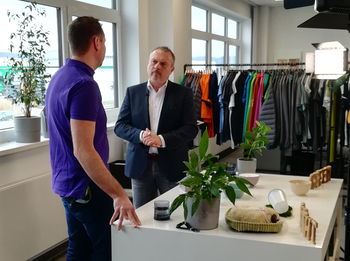
Not all plastics are the same: so where do we find real sustainability?
 Hans-Jürgen Hammer from Elasto joined us in the CG Live Talk and of course sustainability was once more the theme. This time the focus was on why not all plastics are the same, and why they can often actually be the better alternative.
Hans-Jürgen Hammer from Elasto joined us in the CG Live Talk and of course sustainability was once more the theme. This time the focus was on why not all plastics are the same, and why they can often actually be the better alternative.Last year in particular, plastics were heavily criticised in Germany. From many quarters it was said that plastics are harmful, not sustainable and "evil" in general. Hans-Jürgen Hammer from elasto deals decisively with these preconceptions, stating that there are important and correct reasons why plastic is often the most sustainable option.
But first to the company: elasto is celebrating its 40th anniversary this year and is therefore a German company with a long tradition. Hans-Jürgen Hammer has also been part of it for 20 years now. It all started back in the day with softballs in Gerhard Sperber's garage. Today production takes place in Sulzbach-Rosenberg with a workforce of approx. 240. The product range includes about 1,500 products.
And what else does "Made in Germany" offer, besides quality? Quite naturally: shorter transport distance and high energy efficiency. The energy footprint is therefore positive. And wherever energy is saved, this also ticks the sustainability box.
Here it is clear that we are dealing with premium quality. And this is the first aspect in which plastic is clearly underestimated: it is not a question of a disposable product if there is quality behind it and the products are functional rather than consumable - in other words when they are used again and again. The company's boxes, bowls and bottles are robust, thick-walled and produced to the highest food standards.
And on top of it all, they're attractive to look at! The products come in a high-quality and sustainable look, which is based on natural products: cornflower, apricot mint, lilac, slate and hazelnut are the new colours. If this does not suit the customer's individual colour palette, the boxes and bowls can be adapted from a certain number of pieces, and from a quantity of 500 photo-realistic printing is possible.
But these products don't just look organic, there's organic material in there too! The plastic for the products consists partly of the original plastic polypropylene and partly of bio-carbon chains, for example from sugar cane. And the trend towards increasing the organic proportion is increasing! Since plastic is no longer being demonised so much in the area of sustainability, organic plastic is making great strides.
But elasto can also do more than just plastic: for about a year now, they have also been producing bottles made of Tritan, and this also in Germany. Thanks to finishing using the Premio Touch process, the bottle can also be printed with raised lettering all around. This means that the brand can also be experienced in a tactile way on the product. It is of course also ideal if the logo is three-dimensional.
Customers are prepared to pay a little more in support of the trends towards sustainability and high-quality products, as long as the cost remains within certain limits. In return, the number of units tends to fall accordingly. It is also clear that if less is thrown away, fewer products are needed overall. With their positive carbon footprint, robust plastic products are therefore definitely a product for the future.
|
|
|





